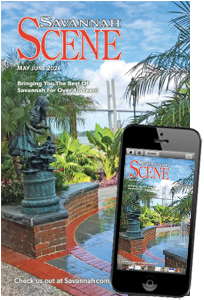Here you will find some frequently asked questions about the State of South Carolina and Hilton Head Island. We are here to quickly find answers to the questions that visitors many have. HiltonHeadIsland.com has the answers!
King Charles I of England granted the land on which South Carolina is located to Sir Robert Heath in 1629. The region was named Carolus, a word derived from the Latin form of Charles, in reference to King Charles. His son, King Charles II, changed the spelling of the regions name to Carolina in 1663, when he gave the land to the eight Lords Proprietors. During the 17th century the land to the south, in this grant, came to be called South Carolina and the area to the north, North Carolina . The two sections remained a single colony until they separated in 1710. The name of the land located to the south remained South Carolina.
Approximately 2.5 million.
Well, it starts with variety. Whether you’re looking for a romantic escape or a family-friendly destination filled with fun and adventure, the beaches in South Carolina offer a million ways to relax and have fun. All it takes is one visit to a South Carolina beach to see why people everywhere say that South Carolina is made for vacation.
Hilton Head is a barrier island and has a low elevation, only a few feet above sea level.
South Carolina’s climate is humid and subtropical, with long, hot summers and short, mild winters. The subtropical climate of South Carolina arises from the combination of the state’s relatively low latitude, its generally low elevation, the proximity of the warm Gulf Stream in the Atlantic, and the Appalachian Mountains, which in winter help to screen out cold air from the interior of the United States. Brief spells of cold weather occur each year in South Carolina. Most of the state receives, on average, 49 inches of precipitation per year. Nearly all precipitation falls as rain, and most precipitation is received during the Spring and Summer. Snow usually occurs only in the mountains and upper Piedmont.
Savannah is 45 Minutes, Charleston is 90 minutes, Bluffton is 15 minutes and Beaufort is 30 minutes.
Azaleas usually bloom during the last few weeks of March and the first few weeks of April in South Carolina. The exact time depends upon the weather in the state. Cooler than usual temperatures usually postpone the blooming of the azaleas, while warmer than usual temperatures usually speed up the blooming process. It is recommended that you contact the visitor’s center of Hilton Head Island for more detailed information.
There are basically four naturally occurring components of a salt marsh: The tidal water, the pluff mud, the cordgrass and oysters. Each of these plays a crucial role and each is reliant on the stability of the others for the salt marsh environment to succeed. The tides push the salty waters into the far reaches of the salt marsh and then suck the water out. This constant filling and flushing of the marshes allows for the dynamic exchange of nutrients to and from the ocean. The salinity of the water in the marsh is nearly the same as the ocean. The cordgrass helps keep the pluff mud in place, the mud accumulates and supports the root system of the grasses and from it emerges the vast oyster beds.
Hurricane season runs from June through November each year. The peak months for hurricane activity are August and September.
If it is the beach you want to enjoy, April through October has the warmest ocean temps. Otherwise, each season has its advantages.
Pets are allowed on some South Carolina beaches. There are local ordinances governing whether or not pets are allowed on the beach. Please contact the Chamber of Commerce or Town of Hilton Head Island about beach questions.
The most popular outfits are white tops and khaki shorts or pants.
There is no island in South Carolina named Gullah Island. Gullah is a culture that is associated with the Lowcountry area of South Carolina. The Gullah people of the Lowcountry and coastal areas of South Carolina are culturally the most distinctive African American population in the United States. The Gullah language, spoken by some of the Lowcountry African Americans, is a combination of King’s English, American English, and an African dialect. The Gullah culture is most prevalent in the Lowcountry area of South Carolina around Charleston, Beaufort, and the surrounding islands and towns.
He performs at Shelter Cove amphitheater.
Yes. They can run as fast as a horse, they have lots of big teeth and they can climb part way up trees. We have struck a deal with our alligators, though: if we leave them alone, they will leave us alone. It is against the law to feed alligators – we are better off if they are afraid of us than if they think of us as a source of food. Females protecting a nest are extremely dangerous if approached. Alligators live in the lagoons so you must never swim in a lagoon or let children (even supervised) play on the banks of a lagoon. Alligators consider dogs a delicacy. Alligators move around – a lagoon that has none today could have one tomorrow. An alligator that has been fed will approach humans and will be caught and destroyed. We say “a fed alligator is a dead alligator”.
From summer we go into my favorite season, fall, where we host the longest fall color season in the nation. … I do love that we have four distinct seasons each with its own South Carolina twist, snow that lasts just long enough for us to enjoy and not tire of and just in time spring arrives.
Summer average maximum temperatures are close to 90° F and minimums are about 70°F. On rare occasions highs might hit 100° F or more. Humidity is usually high since we are surrounded by water. Even on hot days the beach is usually pleasant due to almost constant breezes. Ocean water temperatures in summer range from 80° F in June up to 85° in August. Our rainiest months are July and August, with an average of 7.0 inches of rain each. On hot summer days we frequently get mid to late afternoon thunder showers, sometimes every day and often with dangerous lightening. Fortunately they are usually brief.
In spring and fall, expect temperatures ranging from highs of 70 – 80° F and lows in the fifties.
Winter brings 50 – 60° F highs and lows in the 30’s and 40’s. It rarely freezes, even at night. Sweatshirts and jeans will suffice, but to walk the beach you may need a windbreaker and perhaps a coat to go out at night.
Columbia’s coldest month is January when the average temperature overnight is 34.0°F. In July, the warmest month, the average day time temperature rises to 92.1°F.
Wild Atlantic bottlenose dolphin are active in our local waters throughout the day, regardless of time or tide. The programs that we offer include our two-hour Guided Kayak tour from Shelter Cove Marina, The Outback, The Dolphin Eco tour and, of course, The Ultimate Lowcountry Day.
South Carolina has the 44th-highest life expectancy among all U.S. states (77.0 years). The top 10 U.S. states and territories by life expectancy are: Hawaii, Minnesota, Puerto Rico, Connecticut, California, Massachusetts, New York, Vermont, New Hampshire, New Jersey.

